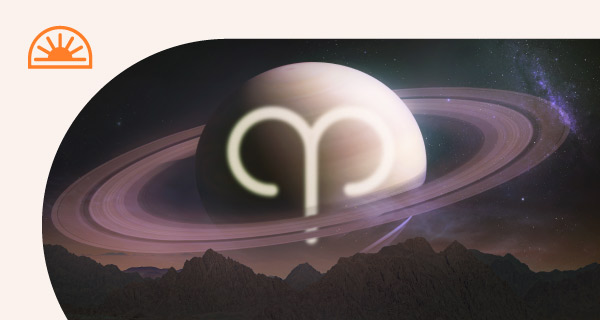The world of astrology is nothing short of fascinating. It is trivial and complex, scientific and mystical.
It can tell you of the lives you have lived before, focus on the influences of major world events, or hone in on the assets and challenges you are given with in this life – or very simply focus in on how your day will go.
Learning how to create and read your own natal chart broadens the mind and sharpens the intellect. It can be as superficial or in-depth as you want it to be. Although reading this article isn’t going to make an astrologer out of anybody, my highest hope is that by the time you finish it, you’ll have a better understanding of this ancient art, and maybe enough interest that you may sit down some Saturday afternoon and map out your own natal chart.
Technically speaking, a horoscope is a picture or map of the heavens for a particular moment in time. A natal (or astrological) chart is a snapshot of the heavens at the moment of birth – the place where all personalized astrological interpretations begin.
The chart bands
If you’ve seen a birth chart, you’ll know that it consists of concentric circles of varying widths. Starting from the center and working outward, the center circle of a completed chart often resembles string-art. this is the heart of the chart, the place where interpretations begin.The various lines and markings show the mathematical relationships, or aspects, of the planets in the horoscope.
The center circle is often surrounded by a thin band, which is divided into segments numbered 1 through12. Each number represents the Houses. While there are many different house systems used in astrology, one of the most popular and simplistic is the Equal House system, which segments this ring into 12 (30-degree) segments.
Think of your chart wheel as a clock, and you will have a line in the same spot as the #9 on the face of an analog clock. The “slice” of this ring that falls from 9:00 to 8:00, is the space of the First House. From here, working counter-clockwise, the Houses are labeled in order, with the 12th House occupying the space from 9:00 to 10:00.
Surrounding the circle that marks the Houses is a much wider circle in which the glyphs (a character or symbol that is used to represent a celestial body), denoting planet placement, are portrayed. Most often, this band has additional information that indicates the number of degrees and minutes the planet is in relationship to its place in the zodiac. The lines drawn in the second circle, the circle of houses, also extend through this ring, giving a chart an appearance that is similar to an evenly sliced pie.
The outermost circle represents the band of the zodiac. While this circle typically does not have the house lines, it does have the glyph of the zodiac sign marking the spot where the house line would otherwise have carried through. This outer ring often has lines drawn on its’ inner edge, to illustrate the 30-degree band occupied by the zodiac sign.
Tools of the trade
There are a several things an astrologer cannot do without. One is an ephemeris, (a publication of charts that show the planetary placements and movements for a given date and time) an Ascendant chart (if your ephemeris doesn’t contain one, or you’re not up for that much calculating and math), a trusty old calculator, a drafter’s compass, and a straight-edge ruler. Of course, if you don’t want to work quite that hard – working out your chart on a computerized program can surely simplify getting the information you need!
Creating a natal chart
In order to create a true natal chart, you need to know the date, place, and time of birth. All of these things are of significant importance for an accurate natal chart. If you are missing any of this pertinent information, a chart can still be constructed, but it will be a solar chart, and much less specific and personal.
The date of birth is important because everything is moving up there in the heavens. Birth time is significant, because the difference between hours and minutes can have great impact on a chart and its’ interpretation. Because of this, when casting a chart, don’t forget to adjust for Daylight Savings or War Time! The place of birth is also important, because longitude and latitude mean a lot. As an example, the sky I see when I look up at midnight on the East Coast of the US isn’t the same thing my editor sees when she gazes star-ward from the Hollywood Hills at 9:00 pm.
If you haven’t plugged your birth information into a website that will calculate a natal chart automatically, it’s time to plot your own. Use your ephemeris or Ascendant chart, to fill in the outermost ring of the chart wheel. Your Ascendant is the Zodiac sign that was ascending or rising over the Eastern horizon at the moment of birth. This is your Rising Sign, and should be marked at the beginning cusp of the First House – on the line which would be 9 on the face of a clock. Work counter-clockwise at each “hour” or House cusp, when filling in the rest of the Zodiac. As an example, if your Rising sign is Gemini at the 9:00 position (1st House), Cancer would be placed at the 8:00 position (2nd House), Leo at 6:00 (3rd House), and so on.
Next, you need to look up the planetary placements for your birth data, using your ephemeris, and fill the information into the largest ring of your chartwheel, placing it as accurately as possible. Perhaps your Moon is in Libra, your Mercury in Gemini or your Venus in Sagittarius…
Once you have all the planets, sun, and moon filled into the proper spots, what you are looking at is a snapshot of the heavens at the moment you were born. Pretty neat, huh?
From the chart you have just created, you have just opened the door to a wealth of information. You can now see which houses and signs your plants are in. The more research you do, the more fascinated you will become. But, for those who are hard-core, the center circle must be filled in.
The inner circle of aspects
Get out your ruler, and maybe several different colors of pens, because this is where the hard work (and fun!) really begins. Now that everything is mapped out, it’s time to see how the relationships come into play. It’s aspect-arian time! Lines will be drawn and relationships will be made, as the aspects come into play. Conjunctions, oppositions, trines and squares – the harder you look, the more you’ll learn.
A conjunction is when two planets occupy the same space, usually within 8 degrees. So, if you have Mercury at 10 degrees of Aries, and Venus at 15 degrees of Aries, what you have is Mercury Conjunct Venus. Conjunctions add power and intensity. Oppositions occur when planets are exactly opposite each other, 180 degrees apart. Oppositions signify stress. Trines occur when planets are 120 degrees apart, and are considered to be very beneficial relationships. Squares are formed when planets make a 90 degree angle. Squares usually are a sign of friction. The aspects, and interpretations, go on, and on, and on.
Chart interpretations
Interpreting your natal chart isn’t just about what planets are where, and who is making an aspect with whom. It is about the total picture, and all the relationships formed. Some houses may be packed with planets, and others have none. You may have a lot of placement in Earth and Fire Signs, and few or none at all in Air or Water.
If all of this sounds terribly complicated there are a wealth of books and information out there to help you interpret your chart. The more knowledge you have about the planets, the zodiac, the aspects and the elements, the better! This will only increase your knowledge and depth of understanding to help you apply the information that an astrological chart reveals.
A word of caution
Once you’ve figured out a chart of two, you may find astrology addictive. Trust me, I know. I remember that fateful day as a teenager, coming home from the library with an astrology book and making my first chart on a paper plate. Hundreds of books and many software programs later, there is still so much about astrology that I don’t know. It is an art, a science, and a passion that is as evolutionary as the Universe itself, and I trust that I will continue to learn and be guided by it as long as I have the thirst to know.
Suggested reading
If you wish to learn more about creating natal charts, here are a few of my favorite authors: Alan Oken, Frances Sakoian & Louis S, Acker, Donna Cunniningham, Joanna Martine Woolfolk, Steven Forrest, Sydney Omarr..
Want to know more about your own astrology? Talk to a psychic today. Call
1.800.573.4830 or
click here now.



